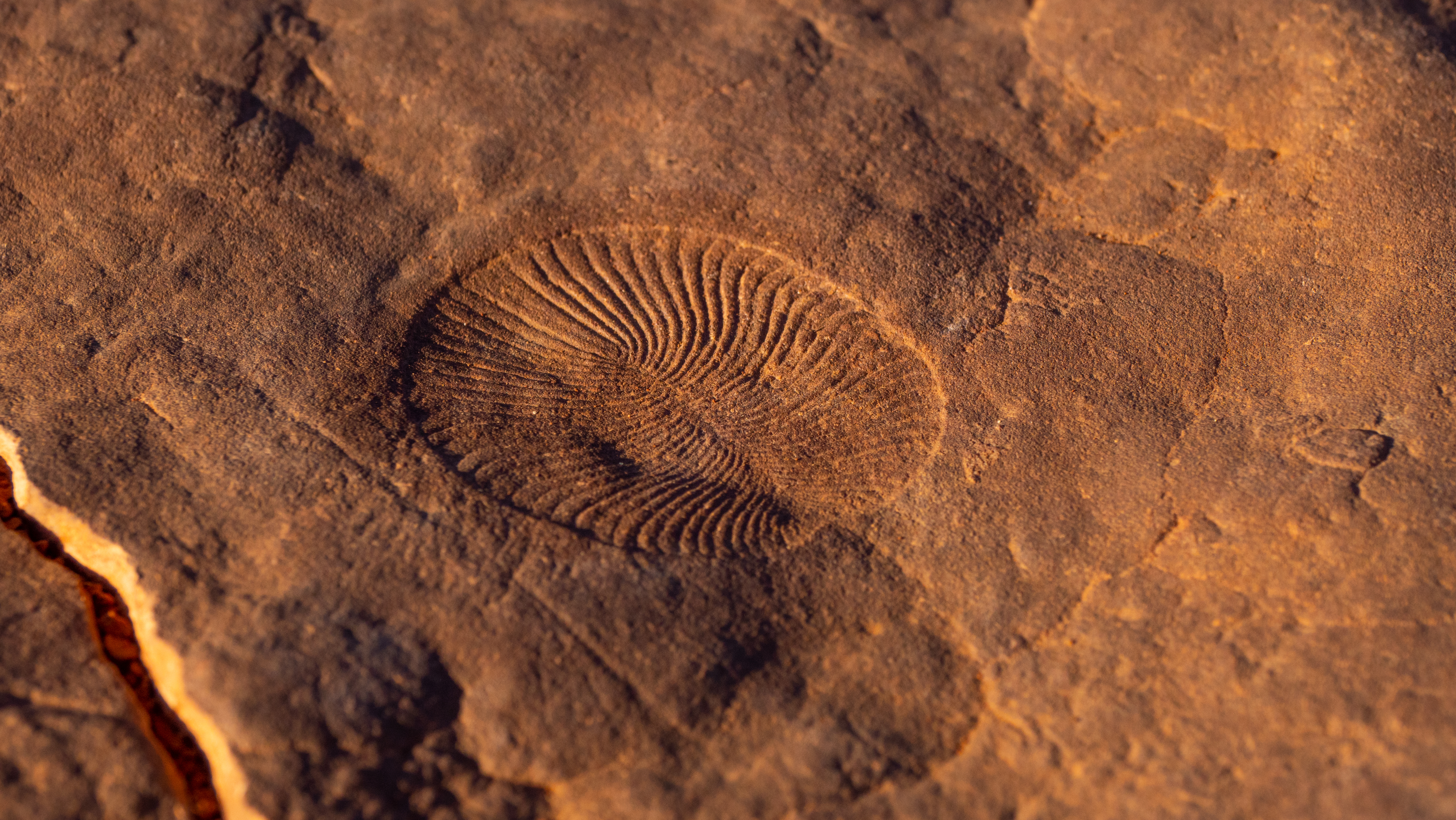
Meet the who’s who of the Ediacara world

Dickinsonia
Creeping, gliding gracefully like a slow stingray, its rounded body stretches out, expanding and contracting as it moves across the sea floor, absorbing food through its body. Rugged in character and leathery in exterior, it is somewhat of the tough guy of the Ediacara world, growing up to a metre across.

Spriggina
Say hello to South Australia’s fossil emblem. A wriggly little fellow that looks pretty cool. Some say it has a definite head, might even have eyes and a mouth. Is this a possible forebear to hardshell insects or crabs? And is it true that Spriggina might have developed into a predator?

Attenborities
Think Attenborities, think Sir David Attenborough. Well, they were named after him. Grape-size, possibly translucent, graceful little creatures bobbing up and down and going with the flow like ancient jellyfish while observing the wonderful world around them.

Funisia
Move over Aphrodite, the goddess of love, lust, beauty, passion and procreation. Meet Funisia, who invented it all. That’s right, the living creature that invented sex; flirting, swaying, seducing and releasing sperm and eggs into the water column, similarly to the way coral does today. Such passion all those hundreds of millions of years ago, in the first record of sexual reproduction on earth.
Tribrachidium
Poor Tri seems a little confused. With most Ediacara having bi-radial symmetry, Tri is tri-radial which means it looks a little different with a body plan like none other. Maybe that’s why Tri was shy and spent most of the time way down on the bottom of the seabed.

Arborea
Don’t call her a plant, she’s an animal. Anchoring herself to sediment through a holdfast, she sways in the current and reaches up a metre high. Living in the deeper parts, not only funky but a prominent character in this most far-ancient world.

Microbial mat
Now for something really disgusting. Think algae, think goo, think slime. Think about putting your feet into the foulest ocean floor. Well, it can’t be too bad because it’s the blob that sustained life, the ultimate food source – the creeping, gooey glug that was the microbial mat that fed life on earth.
Want to meet the gang?
Ediacaran fossils form the basis of the unique tourism experience in Nilpena Ediacara National Park, located in the Northern Flinders Rangers, approximately 40km from Parachilna.
To ensure the preservation of this scientific and culturally significant area, entry to Nilpena Ediacara National Park is by guided tour only. Bookings cannot be made at the entrance and must be organised online prior to arrival.
For further details or to book your visit: Nilpena… — National Parks and Wildlife Service South Australia
Ediacara biota interactive 3D resource
The Ediacara biota now has its very own website! Developed by the Flinders Ranges Ediacara Foundation, it has interactive 3D models and more information designed to help school students and the general public understand more about these fascinating creatures, and the importance of the Nilpena Ediacara fossil fields.
